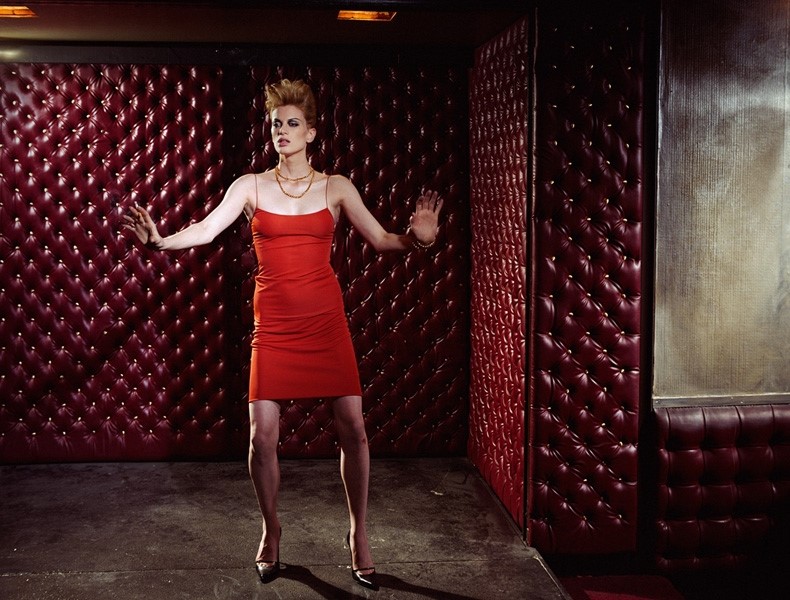Philip-Lorca diCorcia is one of the most respected voices in contemporary American photography. Acclaimed for his painterly touch, his work has been exhibited worldwide in the most prestigious venues, from the Whitney Biennial in 1997 to the Venice
Philip-Lorca diCorcia is one of the most respected voices in contemporary American photography. Acclaimed for his painterly touch, his work has been exhibited worldwide in the most prestigious venues, from the Whitney Biennial in 1997 to the Venice Biennale in 2011. He has had numerous solo shows, for instance at the Museum of Modern Art in New York in 1993 and the Los Angeles County Museum in 2008. Between 1997 and 2008, he collaborated with the editor of W Dennis Freedman on 11 portfolios for the magazine, then published in a book entitled Eleven. He is represented internationally by Sprüth/Magers in London and Berlin and David Zwirner in New York.
How would you connect fashion to elegance?
They’re both desirable and imply the other.
What is the role of history and art history in your conception of fashion?
Fashion wouldn’t exist without art history and art history wouldn’t exist without fashion. The relationship has, I believe, everything to do with the commodification of desire – whether that’s the desire to be a proper Christian or to be the devil’s advocate.
Would you describe fashion as a language and a discourse, as Barthes did it?
Fashion, as it is practiced now, is more analogous to hip-hop compared to poetry. It’s more slang than a language. The discourse, it seems, is with itself: fashion is one of these weird diseases that eats its own flesh. It’s really just a matter of whether it’s a main course or dessert.
The word "intellectual" was coined in a time of great political distress. Does fashion have a political role? And in which way?
In the sense that people’s credibility is enhanced by fashion and we live in a world of extreme distrust of our political and social leadership. Fashion has a role; whether it succeeds in that role, I don’t know. Everybody, from Karzai to Lady Gaga, is basically propped up by their appearance. Karzai is probably a crook, and Lady Gaga is a kind of really boring redundancy. If you look at the emperor’s new clothes, it’s probably as close as you get to a good answer.
"Fashion wouldn’t exist without art history and art history wouldn’t exist without fashion. The relationship has, I believe, everything to do with the commodification of desire – whether that’s the desire to be a proper Christian or to be the devil’s advocate"
How would you relate the concept of "fashion" to the one of "style"?
Style owes fashion. In the case of fashion, there’s always a gap that you have to bridge in order for it to establish itself. In the case of style, it’s a tool of gratification.
What does fashion have to do with intellectuality?
Fashion would seem to be inversally proportionate to its intellectual content, but I think that is, in a way, the Trojan Horse of fashion: people who are extremely intelligent and have a wide knowledge of the world somehow insinuate themselves into the culture at large, which would probably reject them otherwise, through the medium that seems the least connected to what is generally seen as intellectual.
You are a photographer who works in fashion, especially during your collaboration with Dennis Freedman at W. How would you define the specificity of your fashion photography?
Fashion, as I practiced it, requires a certain amount of collaboration. I never tried to second guess others, for instance the stylist – except if the models were wearing bikinis in a snow storm… I was using them, and I assume that, to some degree, they were using me. So it was a symbiotic relationship. That’s probably what made it good.
These pictures also attest the use of an elusive narrative. How would you see narrative in your fashion photography?
The staple of fashion photography is something in which you take the same picture over and over again, and just change the clothes. Nobody asked me to do something that is basically a very expert version of a catalogue. I was asked to do it because there is always a notion of narrative in what I do. In the case of my own work, I try to have it play out in single images. But in the case of the fashion photographs, because in a fashion story of let’s say 10 images, there’s always a flow, no single image is the strongest, and you use the intervening images as links, the establishment of a narrative is playing out if not concluding.
In two weeks Donatien Grau will be interviewing the editor of T Magazine Sally Singer
